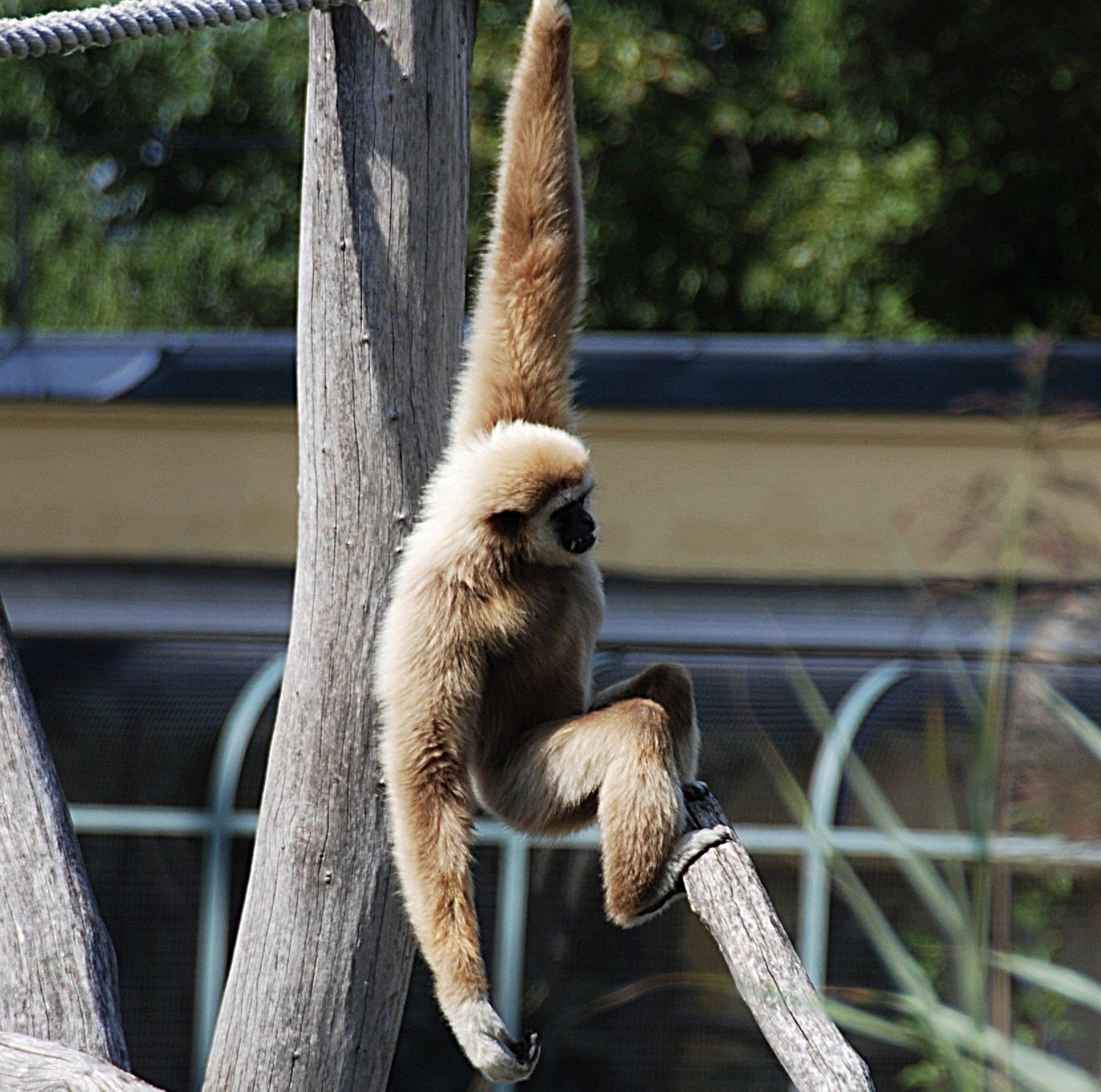ANIMAL: White-Handed/Lar Gibbon Hylobates lar Type of Animal: Gibbon Habitat: Lowland rainforest, submontane rainforest, mixed deciduous bamboo forest, evergreen forest, monsoon forest, peat swamp forest Location(s): Thailand, E. Burma, Malaysia, & N.W. Sumatra. Possibly, still in small parts of S.E. China. Appearance: Coloration varies from black & dark-light brown to light brown sandy coloration. Curved fingers, elongated hands, very long arms & relatively short legs. Coloration not sex related. Food/Diet: Fruit, leaves, seeds, flowers, bark, shoots, insects, snails, spiders, small birds, buds, blossoms, eggs, small lizards, small rodents, turtle/tortoise hatchlings, snake hatchlings, nuts, berries, vines Status in Wild: Endangered Conservation: Breeding in zoos, breeding centers, & wildlife parks Lifestyle: Family troops consist of monogamous pair w/ 1-4 offspring. Additional Info: Called: Male Female Young-Infant Group-Troop Weight: Male- 12.6 lbs Female- 11.7 lbs Young- 5 lbs Gestation: 7 months Height: Male- 1.4-1.9 ft Female- 1.37-1.9 ft Body Length: Male- 1.4-1.9 ft Female- 1.37-1.9 ft Life Span: 25-30 years in wild, up to 40 years in captivity Main predators are large pythons, felids, & raptors. Family troops very territorial & mark w/ vocalizations. First, adults start w/ duet & offspring join in. Female’s part is long rising series of notes while male grunts, squeals, & whistles. Vocalizations can be heard hundreds of miles away. Troops sometimes engage in deadly fights when encountering other troops. Endangered due to logging, habitat loss, pet trade, medicinal trade, disease, inbreeding, & hunting for meat. Young stay w/ parents until sexual maturity at 6-8 years old. Territories range from 30-100 acres. Due to habit of brachiating from tree to tree, bone fractures quite common. Almost all their time is spent in the canopy. They groom each other to reinforce bonds. Females give birth every 2.5 years. Female dominant over male. Fun Fact(s): They can swing at distances up to 50 ft, at speeds as much as 35 mph. Can leap over 30 feet in a single jump. While they look like monkeys, they’re apes since they lack tails. Can give a very nasty bite w/ their sharp canine teeth.

